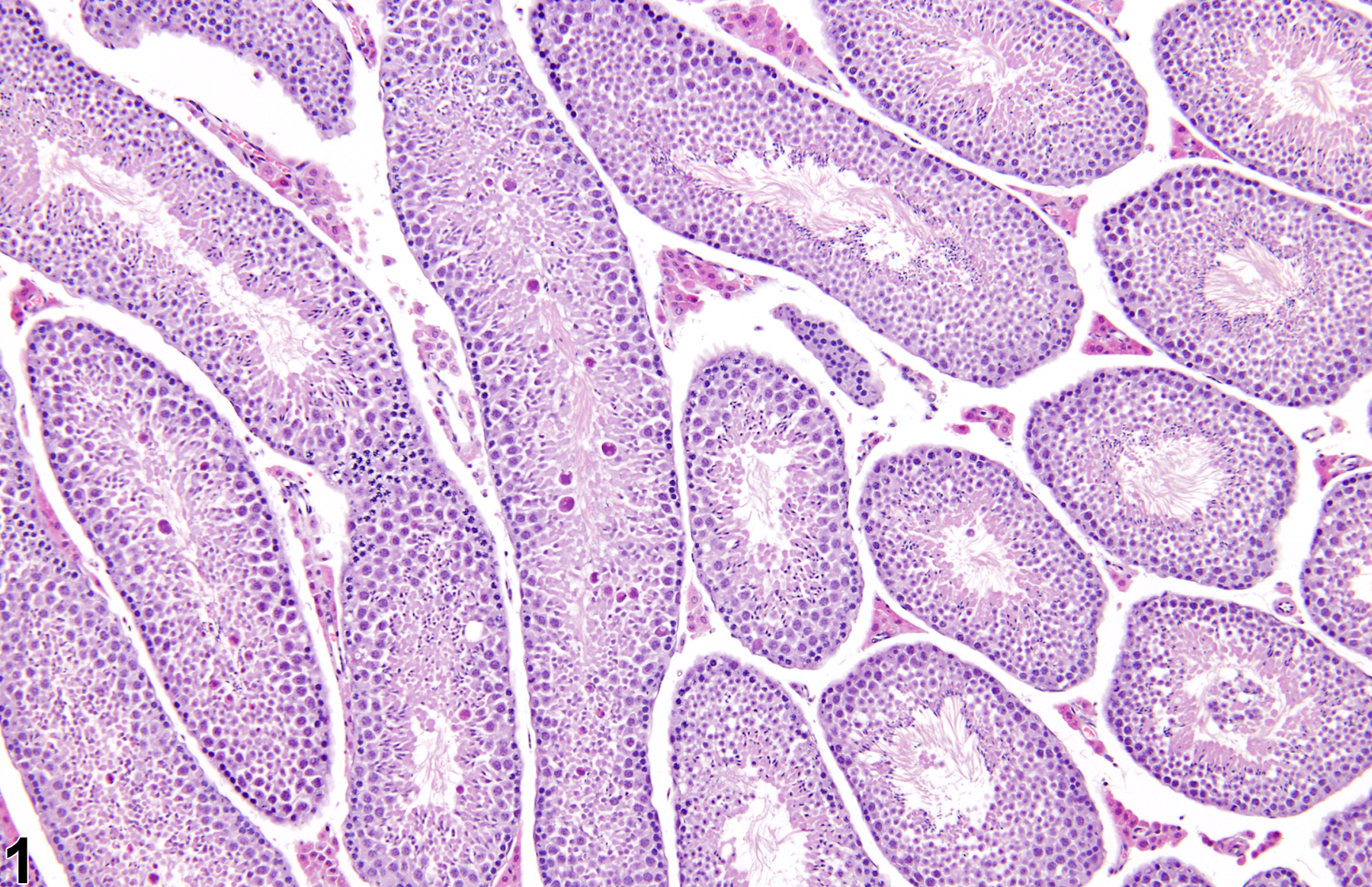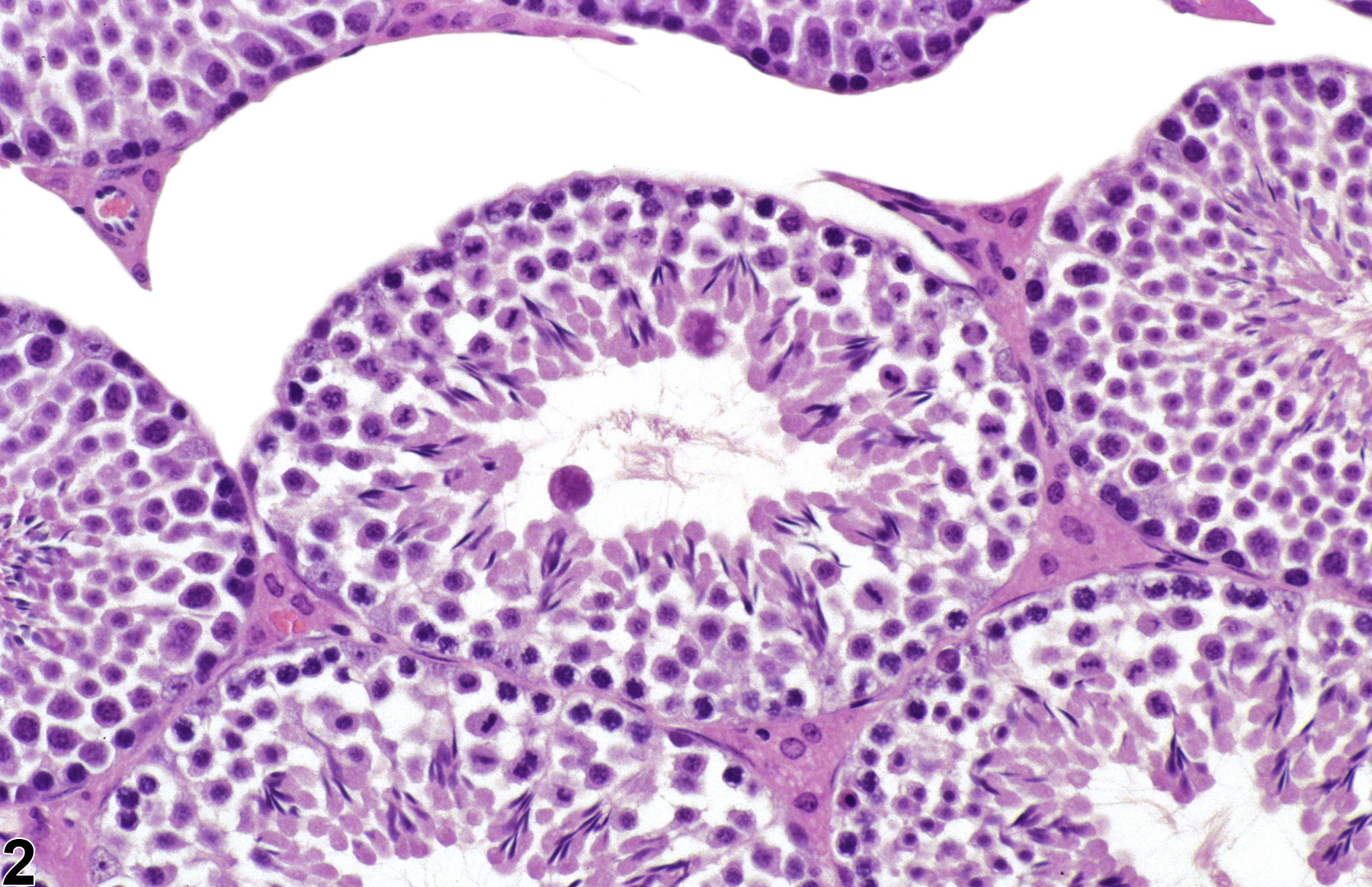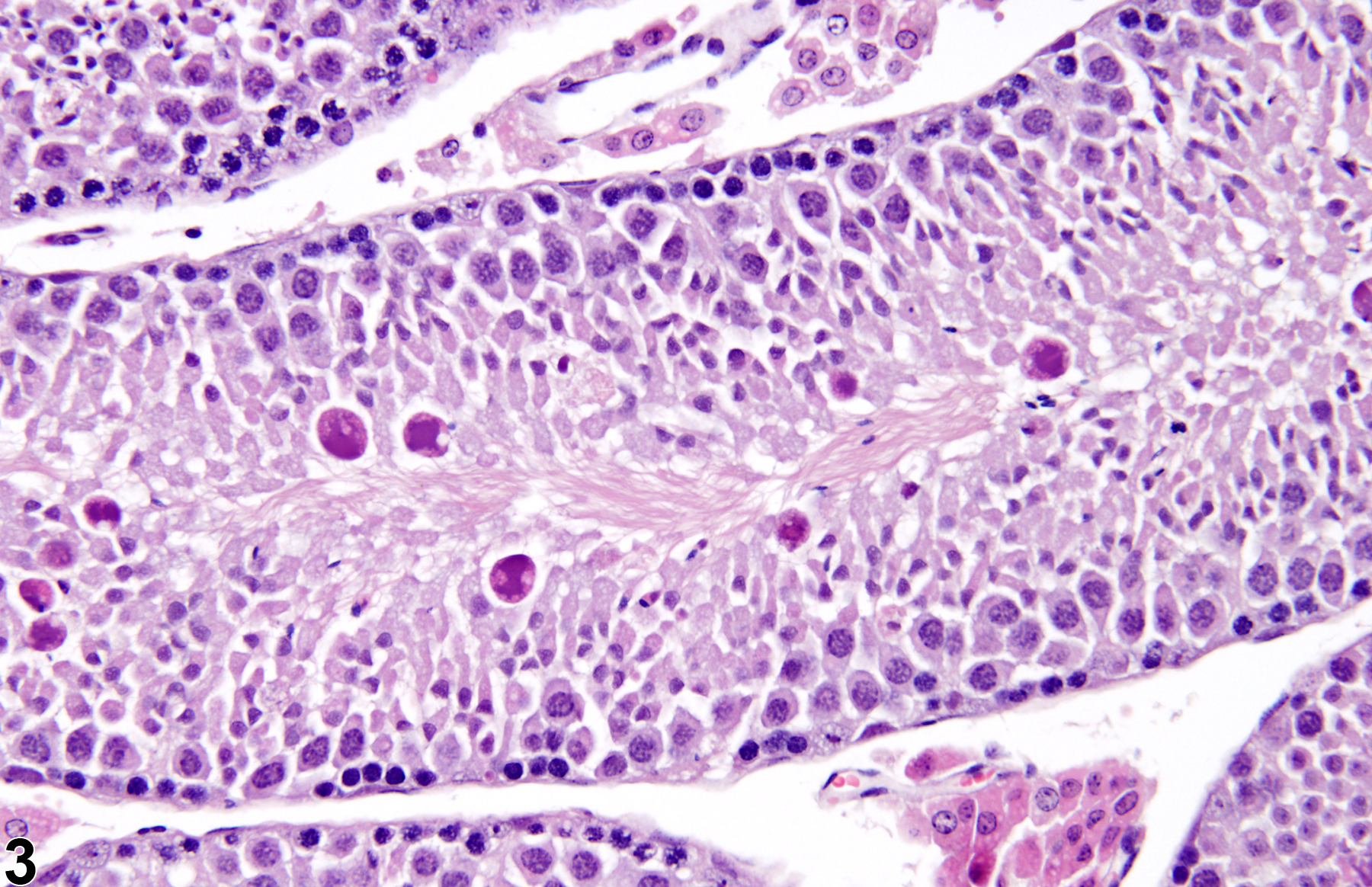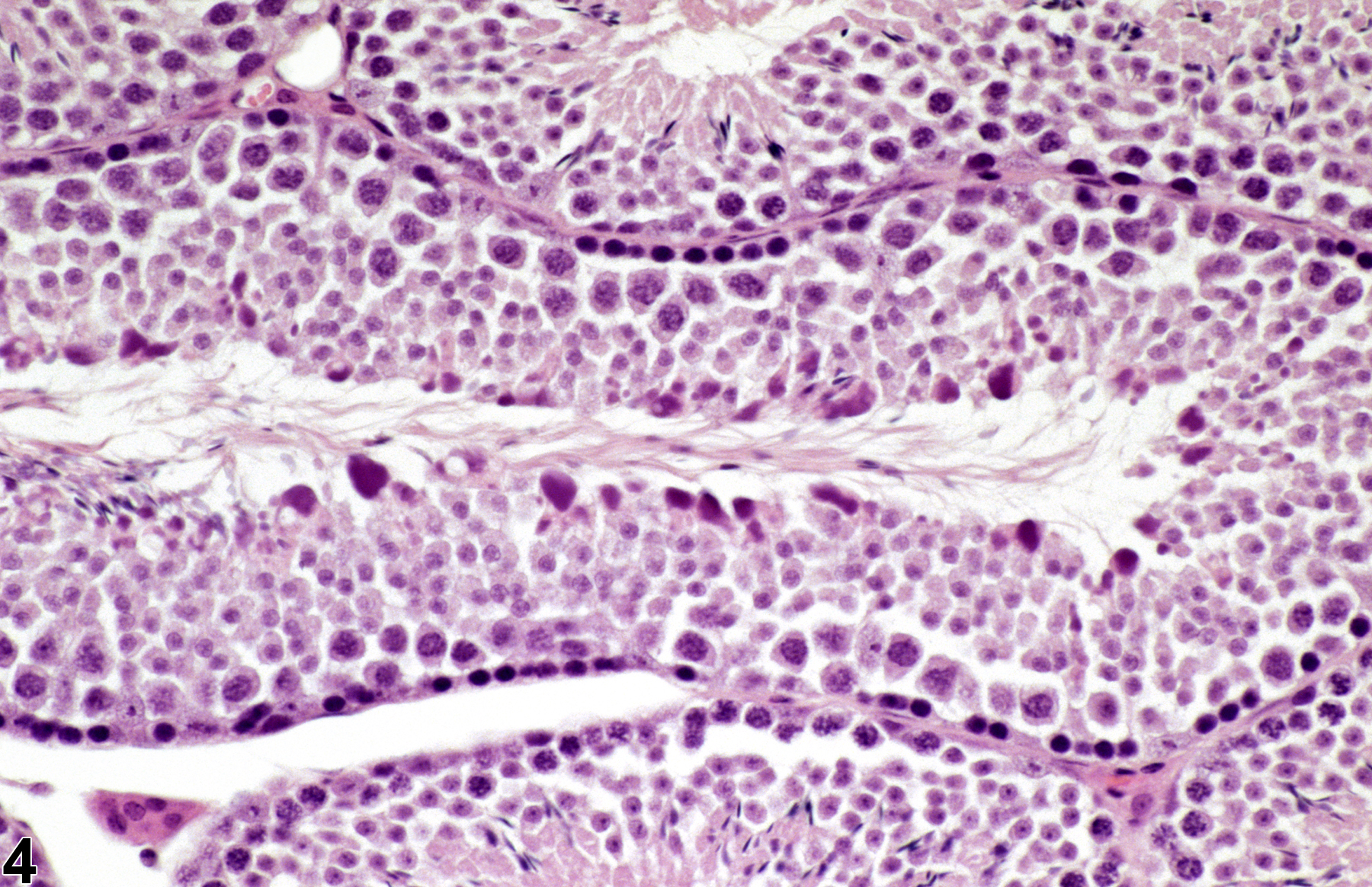Reproductive System, Male
Testis - Atypical Residual Bodies
Narrative
Creasy DM. 2012. Reproduction of the rat, primate, dog and pig. In: Background Lesions in Laboratory Animals: A Colour Atlas (McKinnes E, ed). Saunders Elselvier, Edinburgh. 101-122.
Abstract: http://www.sciencedirect.com/science/book/9780702035197Linder RE, Klinefelter GR, Strader LF, Suarez JD, Roberts NL, Dyer CJ. 1994. Spermatotoxicity of dibromoacetic acid in rats after 14 daily exposures. Reprod Toxicol 8:251-259.
Abstract: http://www.ncbi.nlm.nih.gov/pubmed/8075514Linder RE, Klinefelter GR, Strader LF, Veermachaneni DNR, Roberts NL, Suarez JD. 1997. Histopathologic changes in testes of rats exposed to dibromoacetic acid. Reprod Toxicol 11:47-56.
Abstract: http://www.ncbi.nlm.nih.gov/pubmed/9138633Somkuti SG, Lapadula DM, Chapin RE, Abou-Donia MB. 1991. Light and electron microscopic evidence of tri-o-cresyl phosphate (TOCP)-mediated testicular toxicity in Fischer 344 rats. Toxicol Appl Pharmacol 107:35-46.
Abstract: http://www.ncbi.nlm.nih.gov/pubmed/1987658
Testis - Atypical residual bodies in a B6C3F1 mouse from a subchronic study. Seminiferous tubules show atypical residual bodies.





